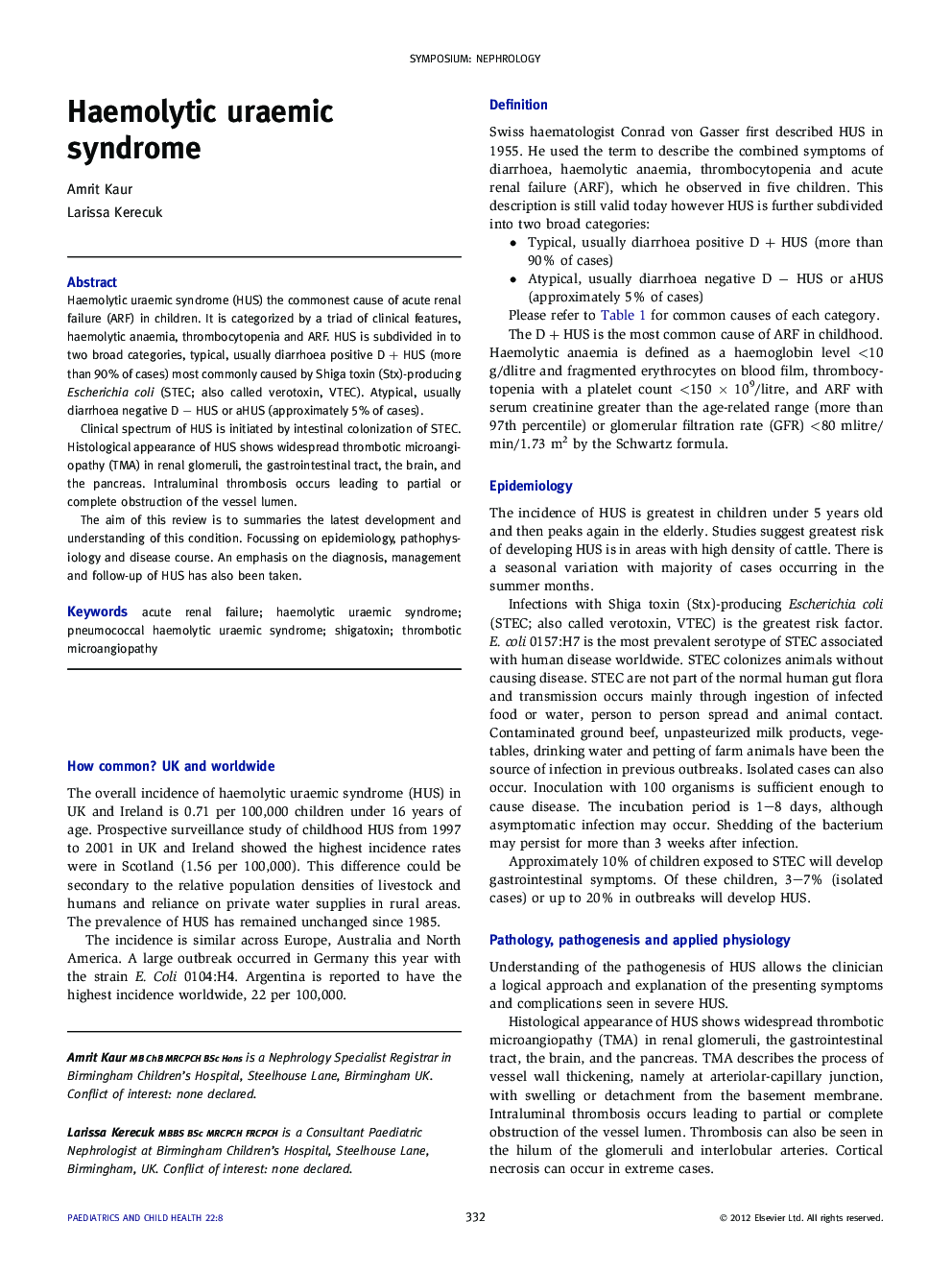| Article ID | Journal | Published Year | Pages | File Type |
|---|---|---|---|---|
| 4172561 | Paediatrics and Child Health | 2012 | 5 Pages |
Haemolytic uraemic syndrome (HUS) the commonest cause of acute renal failure (ARF) in children. It is categorized by a triad of clinical features, haemolytic anaemia, thrombocytopenia and ARF. HUS is subdivided in to two broad categories, typical, usually diarrhoea positive D + HUS (more than 90% of cases) most commonly caused by Shiga toxin (Stx)-producing Escherichia coli (STEC; also called verotoxin, VTEC). Atypical, usually diarrhoea negative D − HUS or aHUS (approximately 5% of cases).Clinical spectrum of HUS is initiated by intestinal colonization of STEC. Histological appearance of HUS shows widespread thrombotic microangiopathy (TMA) in renal glomeruli, the gastrointestinal tract, the brain, and the pancreas. Intraluminal thrombosis occurs leading to partial or complete obstruction of the vessel lumen.The aim of this review is to summaries the latest development and understanding of this condition. Focussing on epidemiology, pathophysiology and disease course. An emphasis on the diagnosis, management and follow-up of HUS has also been taken.
